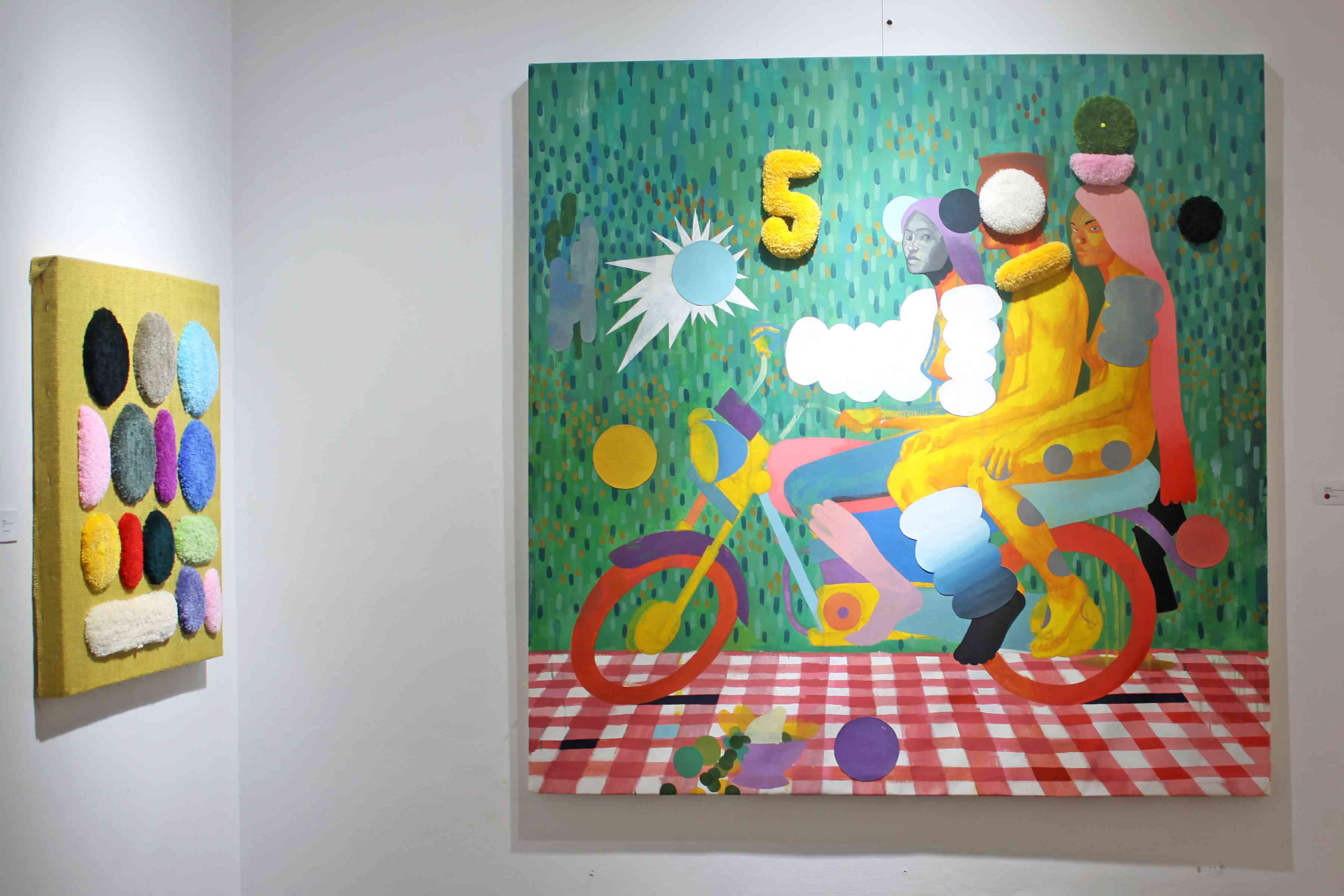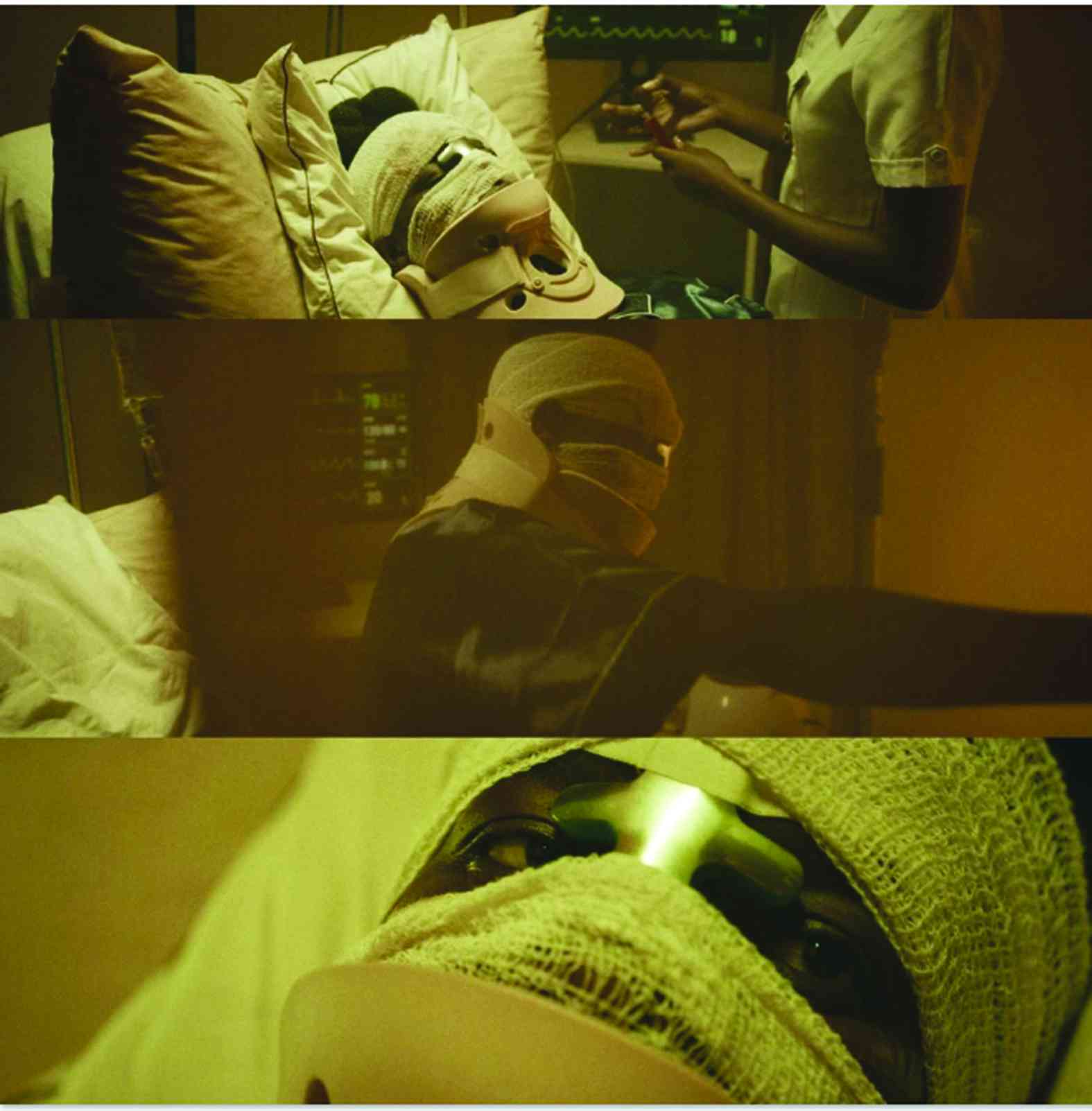
MANY people who are familiar with Komborerai Chapfika’s work must have been taken by surprise at his recent exhibition at the Artillery Gallery.
They expected his textual Eish Metro series, some video projection and maybe more work inspired by Andy Warhol. Instead, the multidisciplined artist took a metrosexual detour and presented whimsy colourful work made from tufted yarn.
The title of the exhibition TLDR (Too Long Didn't Read) is a great title even if it’s too clever and concise.
The sentiment can be taken as caution against presenting a long and erudite exposè, which might have been necessary to unpack all of Chapfika’s accomplishments in this exhibition.
In line with his own ethic demanding brevity, viewers engaging with Chapfika’s work are easily immersed in his world.
In Zimbabwe, working with textiles to create art has become the domain of female artists such as Georgina Maxim, Kresiah Mukwazhi and up-and-coming artists Progress Nyandoro, Kundai Nathan and Shalom Kufakwatenzi.
Most male artists seem to prefer aggressive methods such as carving, welding, moulding and beading. Wilding a tufting gun is not as masculine and aggressive as the other methods of handling materials.
Tufting is an ancient technique used for making warm garments, which many viewers would never have bothered to enquire about before the exhibition.
- Zvepano exhibition offers female perspectives on social issues
- Chapfika’s soft art tackles hard issues
- Five local artists join massive list for Venice Biennale
Keep Reading
Tufting by hand, Chapfika creates a downy texture like the back of a new-born fowl. The artist uses yarn to paint vivid abstract and figurative scenes.
His wall hangings are as soft and delicate as artwork created by a male artist can ever be.
Chapfika maintains a strong balance that makes his work both ornamental, and a vehicle for urgent social commentary.
The extensive use of colour is similar to the extruded sculptures of Troy Makaza. Both artists are not content with bringing out contrasting colours but also pull out every shade of variation.
In the fairytale world of colour that he has created, Chapfika catches luxuriously clothed dubious characters in a moment of exposure as they dash across the frame.
The artist draws a serious critical spotlight on his subject with titles such as The Kleptocrat and The Kleptocrat Returns with Gifts. He seems to affirm the long-held suspicion by Zimbabweans over wealthy people who hold public office.
They are seen as either plundering public coffers or enriching themselves at the expense of taxpayers. The idea of returning with gifts may relate to the public relations stunt of politicians, of making donations and doling out favours when it's time for elections.
A socially conscious reading of Chapfika’s work would be in keeping with his other work, the Eish Metro series. The title of the series is derived from local tabloid. (H-Metro).
In typical tabloid fashion, the paper is notorious for publishing sensational, and damaging stories. The term Eish which the artist adapts from the phonetic sound of the letter “H” is an expression of surprise, annoyance or pain.
One piece from Eish Metro series that reads “Airplane mode will save the world’’ is a succinct comment on infidelity that has risen to pandemic levels fuelled by the use of smartphones and social media.
The newsstand marketing style is a useful prop because people are used to stopping and reading the headlines every morning even from the window of a moving vehicle.
It is interesting to note that another Harare artist Evans Mutenga works in similar manner by imitating the tabloids’ banner, but instead of text, he creates images in his on-going series titled Comrades And Friends.
Chapfika’s satirical take uses text to provide critical assessment of issues ranging from the environment to popular culture.
In his other work, the artist presents two conceptual pieces titled Zim Time that are conceived as clocks inscribed with Zimbabwe’s national anthem in Shona and also has several statements including Zimbabwe Rigged Time.
Chapfika revises the text of the national anthem to replace the word ropa (blood) with rudo (love). This might please those who are against all forms of violence, but older fans with an affinity for postcolonial history might be touchy about the redaction of the gory textual reference.
Sanitising the word blood can be seen as a whitewashing of history particularly in the context of a national anthem. It also conceals the fact that violence was necessary against a cruel regime that executed those who resisted white supremacist ideology including Mbuya Nehanda and Sekuru Kaguvi.
If the purpose of these pieces is provocation, it may have succeeded too well. Still others have seen favourable readings from the two artworks as attested to by a gushing comment in the visitors book, Brilliant Work, loved the Zimbabwe Rigged Time pieces (sic) the most.’’
The artist does not shy away from challenging commonly-held perceptions. In 2015, his solo exhibition at Njelele Art Station featured portraits of political figures like the late former President Robert Mugabe, former Vice-President Joice Mujuru and her deceased husband General Solomon Mujuru.
The trio was previously seen as the axis of power and was not very popular with the working class and urban majority.
Art critic AaV Amasi wrote at the time: “Chapfika uses colour manipulation and photo-based techniques to turn Mugabe from the ‘Guardians Monster’ to the hip granddaddy of cool.’’
Going against the flow, Chapfika was unfazed by the virulent anti-Mugabe sentiment of the time.
Representation of humanity as physical entities is minimal in some of the artworks. In a piece titled Cross Section, the presence of people is suggested by shadows that seem to be a figment of the imagination.
The human body is almost an illusion sustained by the fantasy in a dream world created by the artist. Bodily Resonance is a meditative piece featuring human shadows and a levitating body painted on canvas.
Adjusting the eye between the contrast of the painted shapes and the tufted ones might induce an absorbing hypnotic experience. Although the piece featured a human body with closed eyes, it feels like their spirit has vacated the body and become one with the universe.
Gamblers features a man seated between two women on a motorcycle. The pose and staging suggest the painting was inspired by a 1960s studio photograph.
The colourful and engrossing piece is made from various techniques such as painting, collage, and tufting. The riders may be the gamblers and the outcome unknown, but in his combination of techniques Chapfika’s gamble pays off beautifully.
In TLDR, the artist makes subjects such as corruption and greed less depressing. The artist’s observant insights and acerbic wit make the artworks accessible, fun, thoughtful and provocative.
Chapfika was recently announced as one of the artists to exhibit at the 60th La Biennale di Venezia under the Pavilion ofZimbabwe in 2024, including Gillian Rosselli, Sekai Machache, Victor Nyakauru, Moffat Takadiwa, and Troy Makaza.
Follow us on Twitter @NewsDayZimbabwe










